The Baltic Sea of passenger ships is ecological. Cruise Baltic focuses on OPS
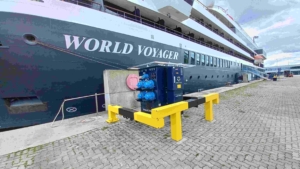
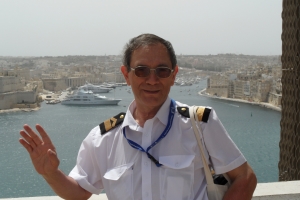 By Marek Grzybowski
By Marek Grzybowski
Cruise Baltic, an organization bringing together ports in the Baltic Sea, has adopted a strategy to develop the power supply for passenger ships from shore installations. A year ago, Cruise Baltic hosted the Sustainable Cruising Conference. 19 cruise ship operators signed a Memorandum of Understanding in Copenhagen committing to use shore-based electricity.
Ecological tourist shipping is an element of broader activity of the countries of the Baltic Sea region. Recently, Poland, Germany and the Baltic and Scandinavian countries in the Baltic Sea region committed to phasing out the use of fossil fuels for energy production. Countries located on the Baltic Sea focus especially on the development of offshore wind energy. The Vilnius Declaration was signed on April 10 this year. representatives of the ministries of energy of Lithuania, Poland, Germany, Denmark, Sweden, Finland, Estonia and Latvia. More: GospodarkaMorska.pl
For their part, the ports associated with Cruise Baltic declared that they would introduce installations enabling them to be powered by electricity from the quays as soon as possible. Therefore, another element of the competitive fight for cruise operators has been added. Because port cities do not leave ports without support. Investments in ports are supported by pro-ecological activities of local governments, organizing ecological transport on land and water.
In order to enable operators to access information about progress in ports’ work towards decarbonizing passenger shipping, new passenger ships are adapted to be powered by shore-based electricity and expect ports to provide appropriate infrastructure – OPS (onshore power supply system).
Therefore, Cruise Baltic annually reviews the electricity supply systems in Baltic ports. The organization says the idea is “to provide operators with easy access to information on land energy and make it easier to plan a sustainable journey.”
Cruise organizers today take into account the readiness of ports to supply energy. Cruise Baltic information is prepared in a more user-friendly version, consistent with Cruise Europe and Cruise Britain standards.
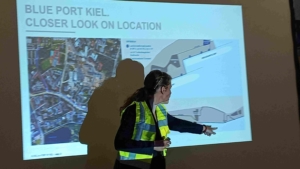
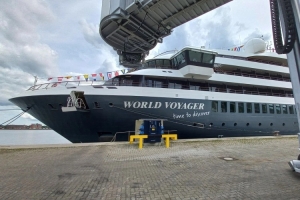
OPS in every Baltic port
The organization is working intensively to promote the involvement of operators in the use of electricity in ports in the Baltic Sea region. The new version of the OPS review in Baltic ports aims to increase the transparency of information availability. It should be complete, i.e. it is not only about information about the possibilities of connecting to OPS. The operator also receives information about the costs and time of connection use.
– Having a tool like the OPS overview allows us to better plan routes based on available shore power. With this new update, it will be even easier for travel planners to find relevant information and plan sustainably, says Marcus Puttich, director of destinations at TUI Cruises.
Puttich emphasizes: “While we still need more ports to install shore-power systems, this review provides excellent support for the cruise industry’s green transformation and helps us meet our guests’ demands for more sustainable holidays.”
Cruise Baltic notes that powering ships from shore “contributes to the local improvement of the environmental condition in ports and their surroundings. By minimizing the release of harmful NOx, SOx and particulate matter that are associated with air pollution, by reducing noise and vibration, OPS helps improve air quality and the overall well-being of surrounding areas.”
– We hope that by updating the overview of shore energy supplies on our website, we will continue to encourage cruise ship owners to take further steps towards the development of sustainable cruise shipping and encourage the installation of shore energy facilities in our region – says Klaus Bondam, director Cruise
Bondam emphasizes: “With comprehensive and up-to-date information on OPS, we make it easier for cruise operators to implement sustainable practices and take advantage of available amenities. We are proud to help reduce our environmental footprint and promote a more sustainable future.
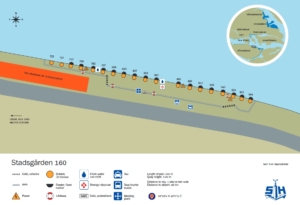
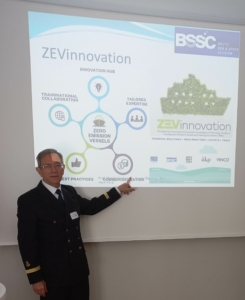
Ports support cities
The number of ports enabling the use of quayside energy is growing rapidly. In 2022, both Oslo and Stockholm have decided to install onshore power. In Oslo, an OPS was built at the Revier pier, allowing for the supply of power to ships up to 300 m long.
In the Baltic Sea region, Kiel and Rostock in Germany, Kristiansand in Norway and Aarhus in Denmark have OPS together with energy storage facilities. From 2023, shore power is available in Stockholm. In 2025, OPS installations will be in Copenhagen. It is estimated that by 2030, 14 ports will provide shore power. Currently, approximately 40% of the world’s cruise ship fleet is equipped with shore power, and it is expected that by 2030, 75% of them will be ready to use shore-based electricity – emphasizes Cruise Baltic.
But it is not everything. City boards are involved in the process of developing sustainable maritime tourism. In Turku, only electric cars are used for tourist traffic. A similar change was introduced from 2022 in Helsinki, where the Passenger Service Department replaced conventional cars with electric ones. Waste from cruise ships is also collected by electric vehicles or vehicles using renewable fuels.
In the port of Copenhagen, all combustion engines of equipment used to operate cruise ships were withdrawn in 2022 and replaced at all cruise quays with devices with electric drives. Specifically, this means that everything from aerial lifts, forklifts, trucks, scanning equipment and conveyor belts use mains power.
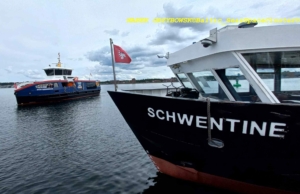
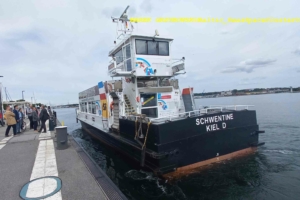
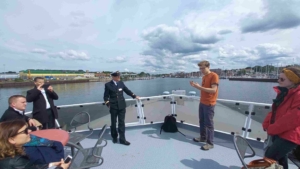
Cities support ports
But it is not everything. As part of a new initiative, Gothenburg will offer alternative shuttle services instead of buses from 2022. Cruise lines can book electric boat transfers for up to 270 people. And this reduces the number of buses transporting tourists to the city.
Additionally, it offers tourists the opportunity to explore the city from the river. It can be imagined that in the very distant future, guests arriving by ship to Gdańsk or Gdynia will be able to take advantage of such an offer.
And in Gothenburg, ship guests are encouraged to walk from Terminal America to the city center. The terminal is located a short distance from the city center. This is done by promoting themed walking tours and better signage. Göteborg & Co. and the Port of Gothenburg also promote and inform cruise guests about bicycle rentals and the possibility of exploring the city by tram.
In Kiel, tourists can travel by electric ferry or electric bus. The ecological transport management system and means of transport are financed as part of the CAPTN project from the budgets of the Land of Schleswig-Holstein and Kiel. In Gdańsk, Gdynia and Szczecin we have someone to learn from. Hopefully not for too long.
